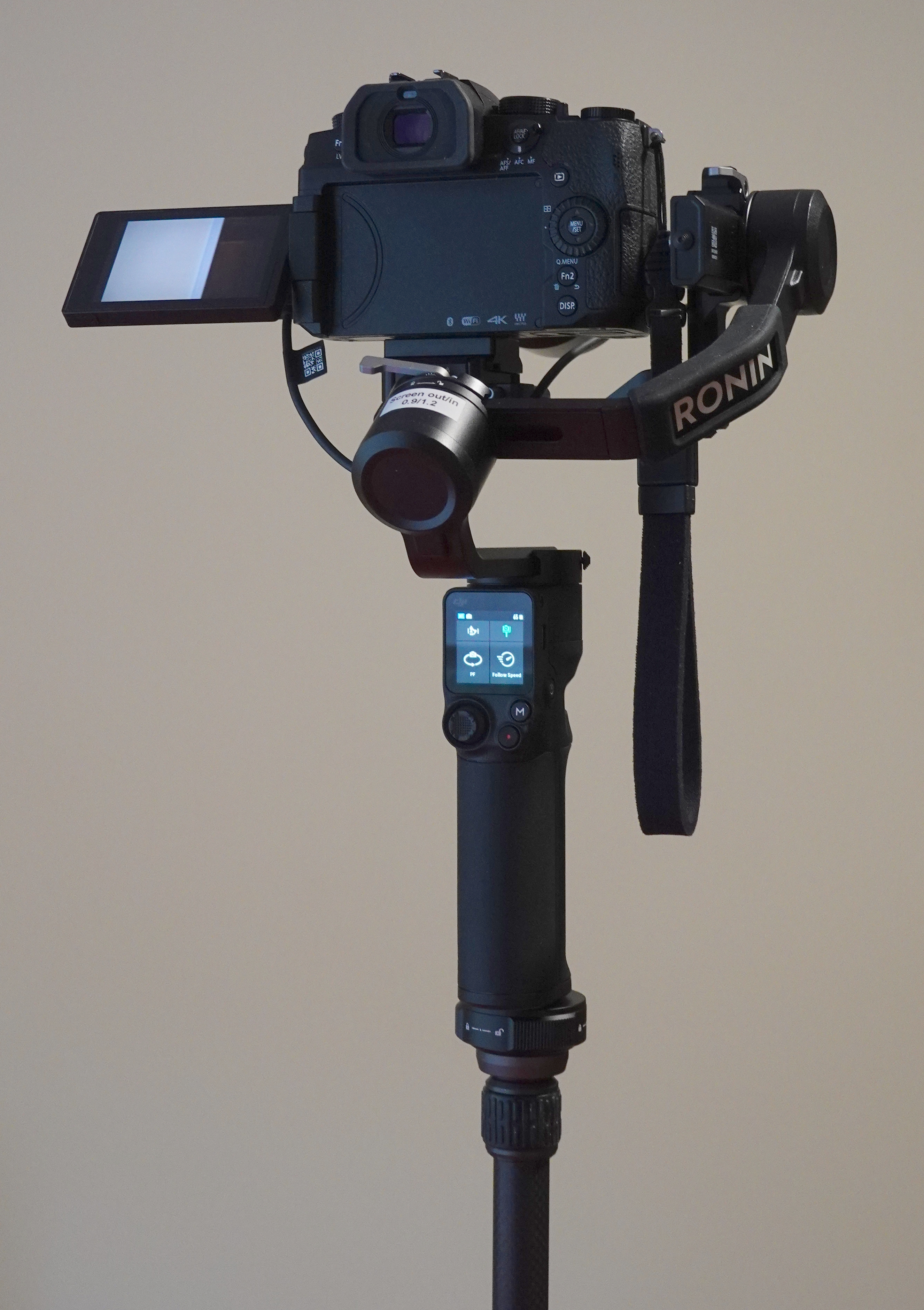I have been taking high-resolution panoramas for many years, and in recent years have been testing and using a number of motorised tripod heads for this. Please see the multi-row panoramas page for the reasons for using a motorised head along with details of ones I have used.
This page provides some background and information about the DJI RS3 Mini gimbal », together with Here are some additional resources:
- my checklist for using it which might prove a useful starting point for a new setup
- an analysis of the component weights of an example ‘kit’ using the DJI RS3 Mini
- and my setup notes that help with initial balancing/setup.
The DJI RS3 Mini gimbal is developed and marketed by DJI. It is a well-specified pan-tilt-roll (3-axis) motorised gimbal with a good phone app for control. As well as being a very good gimbal for steadying cameras for stills and video, it can also be used as a motorised head for manual control and for high-resolution (multi-row) panoramas.
Compared to the other motorised heads I use, this very light (892g, including attachment plates and USB cable). It does, however, take up more room in a backpack than the others and requires some initial setup (balancing, which depends on the camera and lens being used and how they are mounted). Once set up it can be deployed rapidly if using the same camera and lens combination.
Also consider the DJI RS4 Mini gimbal which adds auto-locking and auto-folding for only a few extra grams; these greatly simplify and speed up use of the gimbal.
Using this gimbal, I have been able to a put together a complete panorama kit (details are here) that weighs under 3.3kg, including camera, zoom lens, gimbal, tripod, and backpack. Since the gimbal is also a stabiliser a lighter tripod can be used than for fixed-movement heads.
DJI RS3 Mini gimbal
The DJI RS3 Mini gimbal (3-axis, 0.9kg, 2024) is available new (or used, for less than the cost of most lenses). It has a built-in display and joystick which allow manual control as well as displaying battery level, etc.
There is also an app that is used to control the head with Virtual joystick (remote control), Time lapse, Panorama, and other options. Its Panorama option allows repeat panoramas which is especially useful.
The gimbal can be attached directly to a tripod; I prefer to use a Leofoto 45mm QuickLink socket and plate to avoid having to rotate the head onto the tripod screw (and also allow quick testing on different tripods); this requires a spacer or rubber washer to attach the plate (with 3/8″ fitting) to the 1/4″ socket on the gimbal.
The gimbal comes with an Arca-Swiss-compatible clamp and plate which appear to be unique to DJI and require the plate be fitted with the grooves running front↔back. I replaced this with a SmallRig 4195 set (for DJI RS3 Mini) which has the grooves running left↔right and is also a little more compact and lighter.
I have put together a very light panorama kit based on the DJI RS3 Mini gimbal, a Lumix G90 camera, and the Lumix 45–175mm PowerZoom lens. Together with a 4-section tripod, connectors, spare battery, etc., the kit weighs under 3.3kg (including backpack). Details are linked above.
The Lumix G90 has an articulated screen which allows using the tripod at a lower height for better stability; the tripod I use includes an extendable column. The Lumix 45–175 PowerZoom lens is particularly suitable for multi-row panoramas as it is very light and its zoom length (mm) is shown on the camera screen as it is adjusted – so that length is easily entered into the DJI gimbal app.
The gimbal connects to the camera via a 2.5mm shutter cable (versions are available for most cameras with a remote cable; the Lumix cameras use an ‘L1’ cable); Bluetooth can also be used with many cameras.
The pages and data here are for non-commercial use only. All content © Mike Cowlishaw, 1963, 2025. All rights reserved. Please see http://speleotrove.com/mfc/ » for contact details.
Privacy policy: the Speleotrove » website records no personal information and sets no ‘cookies’. However, statistics, etc. might be recorded by the web hosting service.
This page was last edited on 2025-04-18 by mfc.

